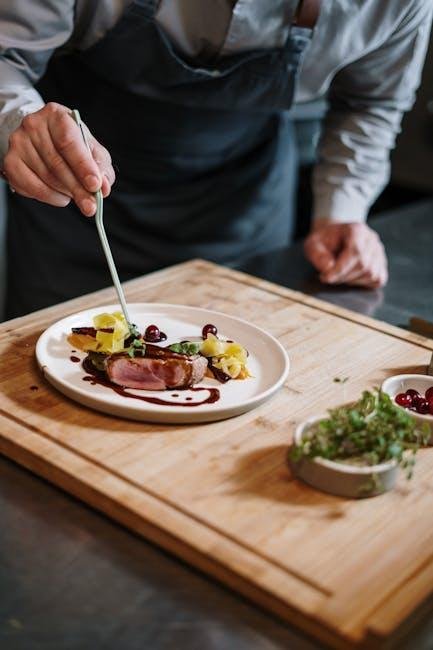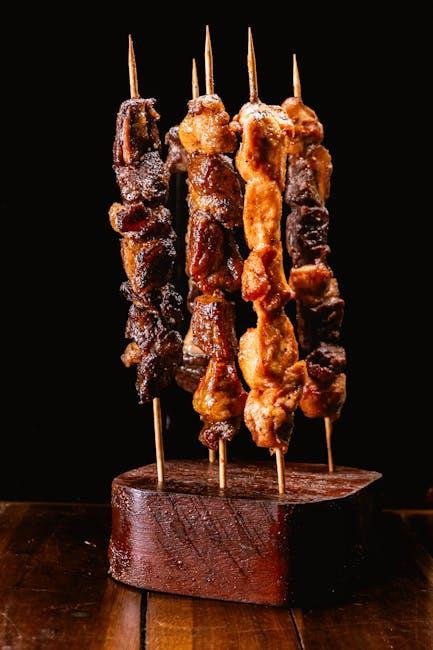In the world of culinary arts, mastering the fundamentals can be the difference between a novice home cook and a kitchen virtuoso. Among the myriad tools available to aspiring chefs, knives stand out as both essential instruments and symbols of craftsmanship. yet, with so many options on the market, the question arises: which blades truly deserve a place on yoru countertop? Enter “Knife Skills 101: The Only 3 Blades You’ll Ever Need.” This guide awakens your culinary journey by demystifying the essential knives that form the bedrock of effective cooking. Whether you’re dicing vegetables,carving meat,or preparing delicate herbs,these three versatile blades will empower you with the confidence and skill to elevate your culinary creations. Join us as we explore the art of knife mastery, ensuring you slice, chop, and mince your way to kitchen success.
Essential Knives for Every Home Cook
every home cook needs a reliable set of knives that can tackle a variety of culinary tasks. Below are the three essential knives that you will frequently reach for in your kitchen:
- chef’s Knife: The workhorse of the kitchen, a versatile blade that can chop, slice, and dice with precision.
- Paring Knife: Perfect for intricate tasks such as peeling fruits or vegetables and handling small delicate jobs.
- Bread Knife: With it’s serrated edge, this knife effortlessly cuts through crusty bread without crushing the soft inside.
These knives not only enhance your cooking experience but also make food planning more enjoyable and efficient. Investing in quality options will ensure that you have the right tools at your fingertips. Below is a brief comparison of these essential knives, highlighting their primary uses:
| knife Type | Length | Primary Use |
|---|---|---|
| Chef’s Knife | 8-10 inches | Chopping, slicing, dicing |
| Paring Knife | 3-4 inches | Peeling, trimming |
| Bread Knife | 8-10 inches | slicing bread, pastries |

Mastering Technique: The Art of Using Your Knives
When it comes to mastering knife techniques, understanding the purpose behind each blade is essential.A high-quality chef’s knife is the backbone of any kitchen, versatile enough to handle a myriad of tasks, from chopping vegetables to finely dicing meat. Equally important is the paring knife, which allows for precision work such as peeling fruits and intricate garnishing. the serrated knife, often overlooked, is invaluable for slicing through crusty bread or delicate cakes without squishing them, ensuring each cut is clean and elegant.
to truly elevate your knife skills,practice is crucial. Start by familiarizing yourself with the balance and weight of each knife, as this will enhance your control and confidence. Incorporate techniques such as the rocking motion for dicing and the claw grip for safety to establish a solid foundation. As your proficiency grows, challenge yourself with more complex tasks, moving from simple slices to intricate cuts. Below is a quick comparison table to guide your knife usage:
| Blade Type | Primary Use | Best For |
|---|---|---|
| Chef’s knife | All-purpose cutting | Chopping, slicing, dicing |
| Paring Knife | precision tasks | Peeling, intricate cuts |
| Serrated Knife | Cutting through crusts | Bread, tomatoes, pastries |

Maintaining and Caring for Your Blades
Taking good care of your knives ensures their longevity and performance, making your time in the kitchen more enjoyable and efficient. The following practices will help you maintain your blades in excellent condition:
- Regular Sharpening: Use a whetstone or honing rod to keep your edges sharp. A sharp knife requires less effort and leads to safer cuts.
- Proper Cleaning: Hand wash your knives with mild soap and warm water promptly after use. Avoid dishwashers as they can dull the blades.
- Safe Storage: Store blades in a knife block, magnetic strip, or in blade guards to prevent nicks and dulling.
Additionally, avoiding certain materials and practices will prolong your knives’ lifespan:
| Do’s | Don’ts |
|---|---|
| Use wooden or plastic cutting boards. | Cut on glass or stone surfaces. |
| Keep knives dry and oil wooden handles occasionally. | Let knives soak in water for long periods. |
| Use the right knife for the task. | Force a knife to cut through hard items. |

Beyond Basics: Expanding Your Culinary Knife Skills
Once you’ve mastered the fundamentals of knife skills, it’s time to elevate your culinary game by exploring advanced techniques that will enhance your precision and efficiency in the kitchen. consider these techniques to take your knife skills to the next level:
- Chiffonade: A method for cutting herbs and leafy greens into thin strips,allowing for an elegant presentation and enhanced flavor infusion.
- Brunoise: This technique involves finely dicing vegetables into small cubes, perfect for creating refined dishes or garnishes.
- julienne: Strips of vegetables cut into matchstick shapes provide texture and visual appeal to salads and stir-fries.
Along with mastering cutting techniques, understanding the different types of cuts you can achieve with your three essential knives can greatly enhance your skills.
| Knife Type | Primary Use | Best Techniques |
|---|---|---|
| Chef’s Knife | Versatile chopping and slicing | Rocking, chopping, and dicing |
| Paring Knife | Peeling and intricate work | Peeling, coring, and mincing |
| Serrated Knife | Bread and soft fruits | Sawing and slicing |
By experimenting with these techniques and understanding the attributes of each knife, you’ll not only improve your efficiency in the kitchen but also bring an artistic flair to your culinary creations. The right knife paired with advanced skills opens the door to an array of culinary possibilities, allowing you to express creativity in every meal.
Concluding Remarks
As we wrap up our exploration of essential knife skills and the three blades that can transform your culinary experience, it’s clear that mastering these tools is about more then just technique; it’s a gateway to creativity in the kitchen. By investing your time in honing your skills with a chef’s knife, paring knife, and serrated knife, you’ll not only enhance your efficiency but also elevate your cooking to new heights.Remember, the art of knife work is a journey, one that sharpens with practice and intention. Embrace the rhythm of the kitchen,let each chop and slice tell a story,and enjoy the process of bringing your culinary visions to life. With these simple yet powerful blades at your side,you’ll be well-equipped to slice through any recipe that comes your way. Happy cooking!

